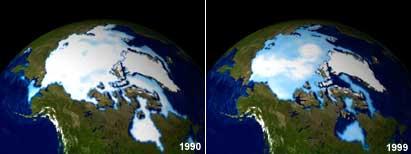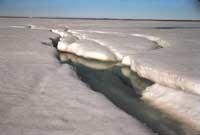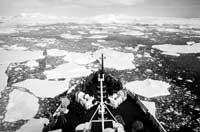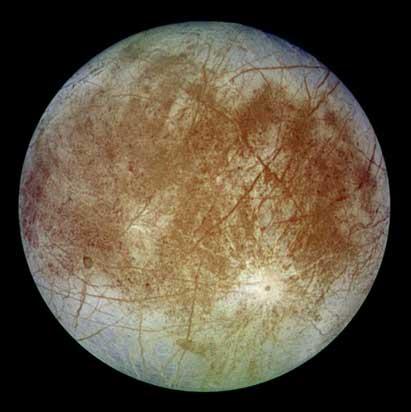Arctic ice melts
2002/12/10 Elhuyar Zientzia

In the Arctic there is a thick layer of ice that does not melt throughout the year. In summer some of this ice melts, but throughout the year there is a thick layer of ice that covers the Arctic Ocean. This ice is called sustainable ice.
From 1979 to the present day they have measured by satellite the surface covered by this ice and quantified the changes that occur every year. Measurements have shown that each year there is less ice. Also this year has melted more ice than ever. To date, the average surface of the ice sheet in summer was 6.5 million square kilometers, but this year has been reduced to 5.5 million square kilometers. In this regard, experts have pointed out that by 2050 20% of sustainable ice will be lost.
They say that the main cause of this last violent thaw is the low atmospheric pressures that have dominated the Arctic in the last decade. Low pressures have led to two main effects: on the one hand warmer summers and stormy springs; on the other hand, these low pressures have changed the direction of water traffic in the Arctic Ocean. The temperate climate and the change in water traffic have created very suitable melting conditions and have been demonstrated by satellite measurements.
Despite the severity of the data, scientists cannot ensure that these low pressures are directly related to air pollution and the thin layer of ozone.

Gai honi buruzko eduki gehiago
Elhuyarrek garatutako teknologia






